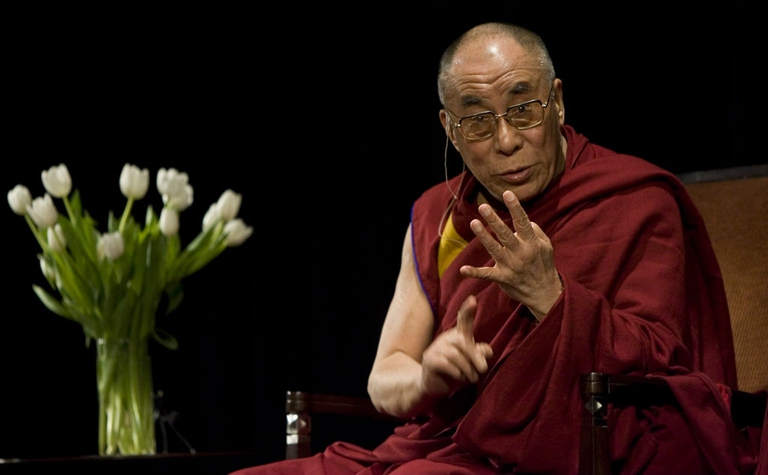
The Amazon became an alternative classroom during the pandemic. Now, the educational forest in Batraja, Bolivia, lives on to teach children and adults the value of nature.
Tibetans describe the hills around their place of prayer as a once pristine area, an earthly paradise. But with occupation everything changed. Trees and timber have been exploited for years, wiping out entire forests. As of 18 April, though, the monks of the Dzogchen monastery, in the Sichuan region, along with the local Tibetan community, began
Tibetans describe the hills around their place of prayer as a once pristine area, an earthly paradise. But with occupation everything changed. Trees and timber have been exploited for years, wiping out entire forests. As of 18 April, though, the monks of the Dzogchen monastery, in the Sichuan region, along with the local Tibetan community, began planting thousands of new trees in order to reforest the area.
Launched by lama Tenzin Lungtok Rinpoche, the reforestation campaign aims to plant at least 15,000 trees “to combat global climate change and protect the environment,” RFA’s source said. The once forested area has been heavily spoiled since the 1960s. Entire slopes are now barren, deserted and no longer able to retain water and control temperatures in the surrounding environment.
China “saw the great forests of Kham as a free resource to be exploited, with not even the cost of cutting roads,” said Gabriel Lafitte, Australia-based expert on Tibet’s environment. “The simpler alternative was to clearfell entire slopes from the bottom right up to the ridge line, simply rolling the tree trunks into the rivers below to be collected well downstream where they entered the lowlands of Sichuan”. Logging was banned in the 1990s yet little was done to recover the area.
The Tibetan spiritual authority is concerned about the situation of his homeland. He told: “Recently, a few thousand Tibetans from India went to their native places in Tibet. When they returned, they all told the same story. They said that about forty or fifty years ago there were huge forest covers in their native areas. Now all these richly forested mountains have become bald like a monk’s head”.
The Dalai Lama has also talked about climate change and the changes natural cycles go through when habitats are destroyed. “The large-scale deforestation in Tibet is a matter of great sadness. It is not only sad for the local area, which has lost its beauty, but for the local people, who now find it hard to collect even enough fuel wood,” he explained. “The deforestation of the Tibetan plateau, according to experts, will change the amount of reflection from snow into space (forested areas absorb more solar radiation) and this affects the monsoon of the next year, not only in Tibet, but in all surrounding areas. Therefore, it becomes even more important to conserve Tibet’s environment”.
Siamo anche su WhatsApp. Segui il canale ufficiale LifeGate per restare aggiornata, aggiornato sulle ultime notizie e sulle nostre attività.
![]()
Quest'opera è distribuita con Licenza Creative Commons Attribuzione - Non commerciale - Non opere derivate 4.0 Internazionale.
The Amazon became an alternative classroom during the pandemic. Now, the educational forest in Batraja, Bolivia, lives on to teach children and adults the value of nature.
Our species took its first steps in a world covered in trees. Today, forests offer us sustenance, shelter, and clean the air that we breathe.
Bangladesh suffered widespread damage as a result of Cyclone Amphan. Yet the Sundarbans mangrove forest acted as a natural barrier protecting the country from further destruction, as it has done countless times before.
On top of a 2.4 million dollar compensation, the indigenous Ashaninka people will receive an official apology from the companies who deforested their lands in the 1980s.
The tapir was reintroduced into Brazil’s Atlantic Forest, the country’s most at-risk ecosystem. The species can play a key role in the forest’s recovery.
Forests are home to 80 per cent of the world’s terrestrial biodiversity. This year’s International Day of Forests highlights the urgent changes needed to save them.
After a legal battle that lasted two years, Indonesia’s Supreme Court has revoked the permit to mine for coal in the forests of South Kalimantan in Borneo.
The list of human and animal victims of the Australia wildfires keeps growing – one species might already have gone extinct – as the smoke even reaches South America.
Areas where the FARC guerrilla used to hold power in Colombia have faced record deforestation. Farmers cut down trees, burn land and plant grass for cows. Because, “what else can we do for a living here in the Colombian Amazon”? An intimate report from the heart of the felled forest in Caquetá.









